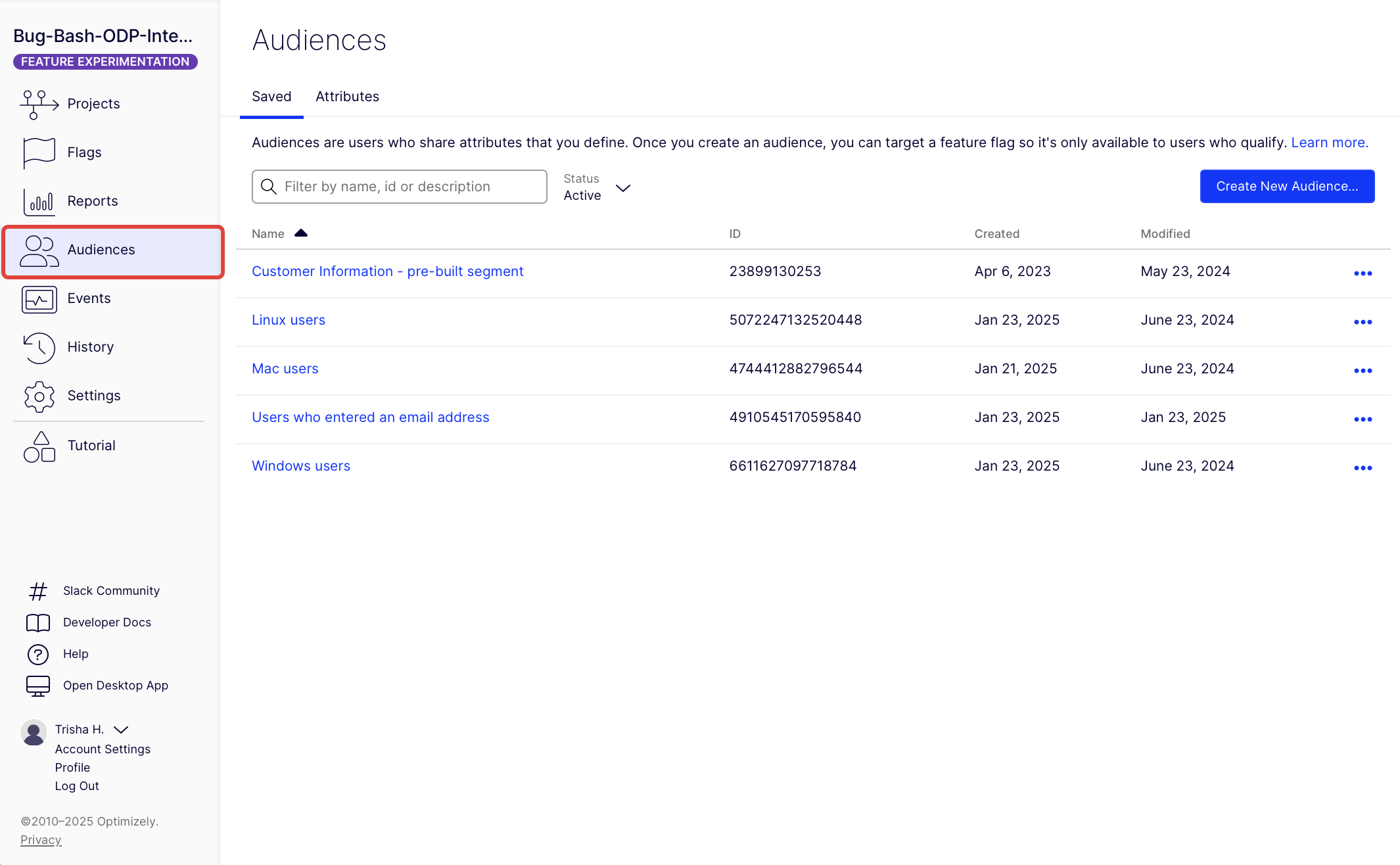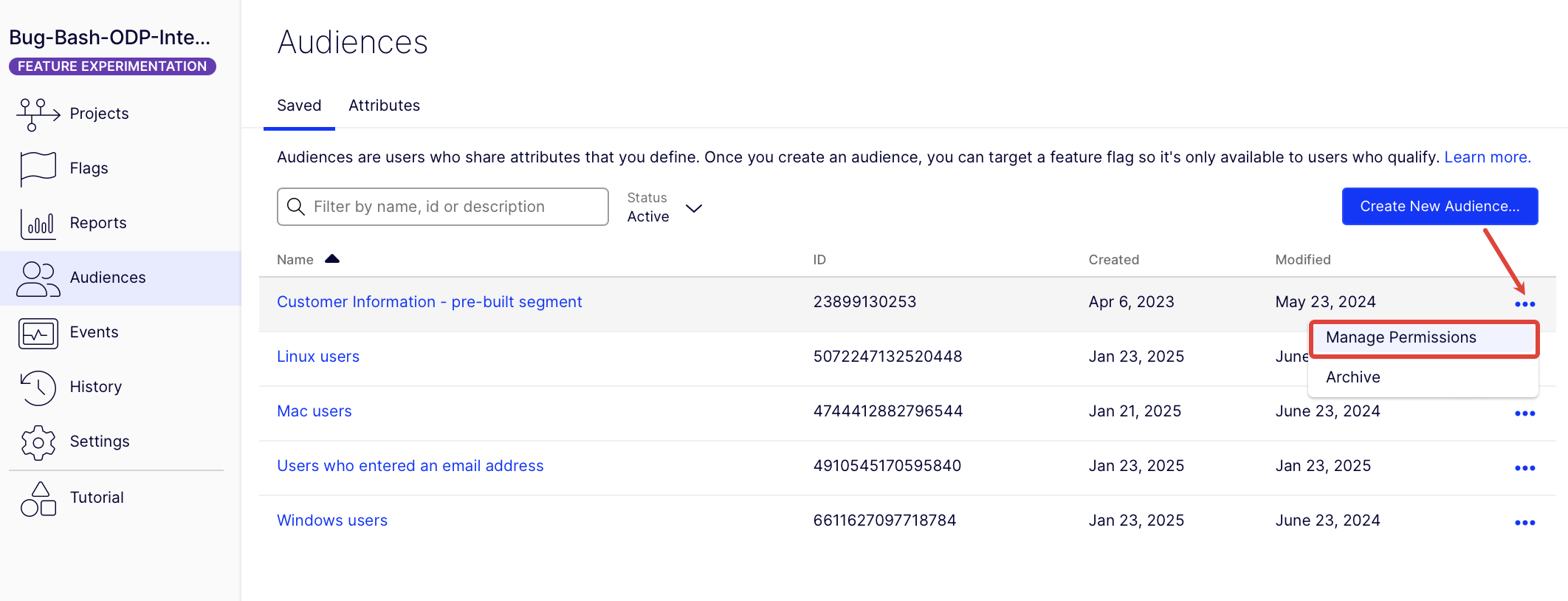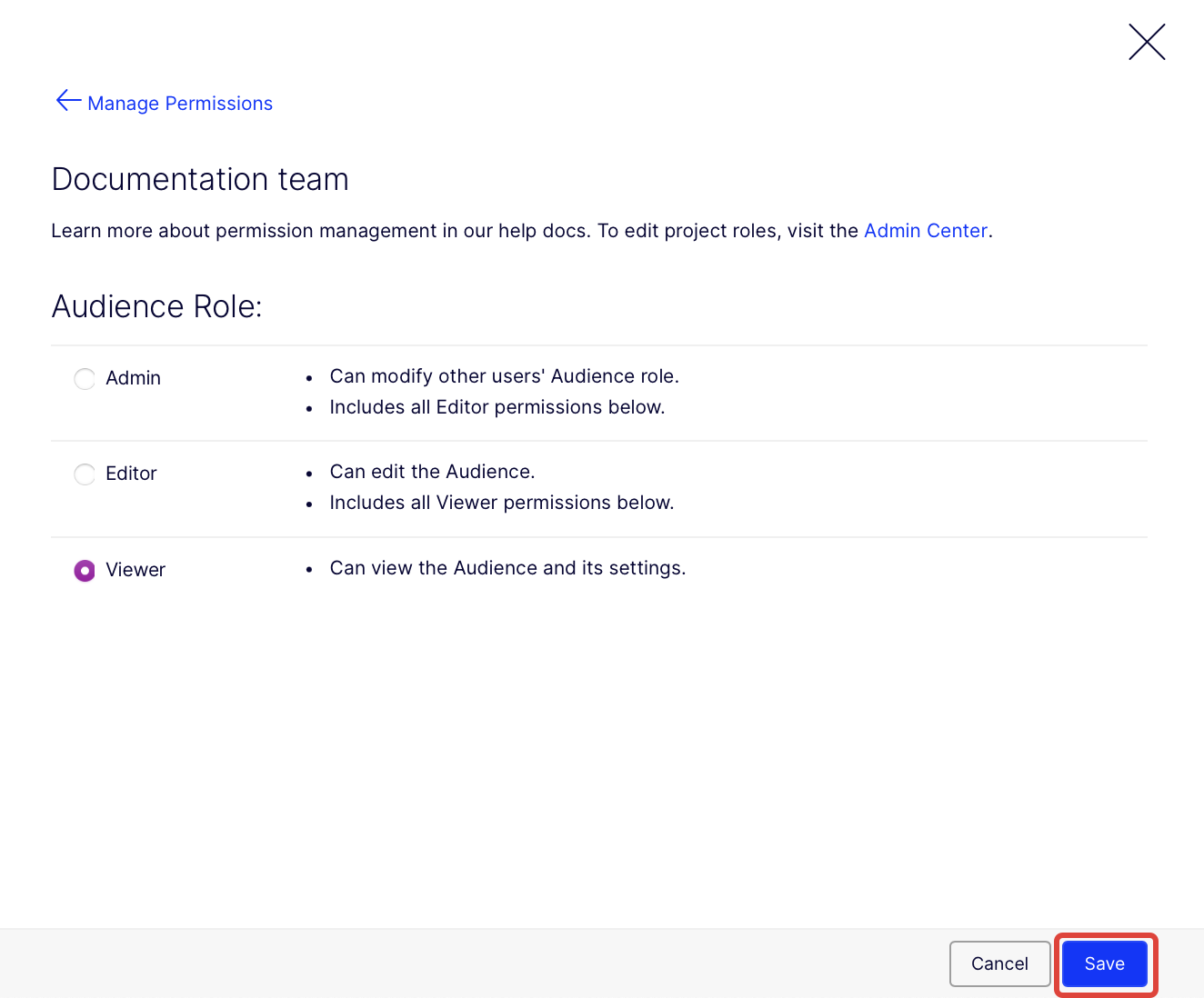Manage audience roles
How to manage granular permissions roles for audiences in Optimizely Feature Experimentation.
You can assign the following audience roles to a collaborator or team:
- Admin – Can view and edit the audience, and manage audience permissions for other collaborators.
- Editor – Can view and edit the audience and its content.
- Viewer – Can view the audience and its content.
Audience permissions
Your audience role (such as Viewer or Editor) determines your level of access to it. This role is based on where the audience is used and your permissions for those entities.
- Unused audience – If an audience is not used in any flags, the project role determines the audience role. For example, a collaborator with the Editor project role is also an Editor for an unused audience.
- Audiences in use – If an audience is used in a flag, your audience role is the lowest of your roles across the following:
- The flags where the audience is used.
- The environments within those flags where the audience is applied.
Feature Experimentation uses the least permissive role across flags and environments to ensure that collaborators cannot exceed their intended privileges. This follows the principle of least privilege. For example:
- Consistent Editor roles – A collaborator who is an Editor for all related flags and environments is also an Editor for the audience.
- Mixed roles – A collaborator who is an Editor for Flag A but a Viewer for the Production environment (where the audience is used) is a Viewer for the audience.
The following table summarizes permission levels:
| Scenario | Project role | Flag role | Environment role | Audience role |
|---|---|---|---|---|
| Audience not used | Editor | N/A | N/A | Editor |
| Audience not used | Viewer | N/A | N/A | Viewer |
| Consistent Editor role | Editor | Editor | Editor | Editor |
| Mixed roles, Viewer lowest | Editor | Editor | Viewer | Viewer |
Note
To create a flag or audience, a collaborator must have Editor or above access in at least one environment.
If your project does not use granular permissions, the collaborator must have an Editor or above project role.
Update an audience role
-
Go to Audiences > Saved.

-
For the audience you want to update, select More Options (...) > Manage Permissions.

-
Select the Users or Teams tab.
-
(Optional) To filter collaborators or teams, you can enter a name on the Search for a user or Search for a team field.
-
Click Edit for the user or team you want to update.
Note
You cannot update the audience role permissions for Administrators and Project Owners.
All other roles display Check Details for the Audience Role because the audience role is determined based on where the audience is used and the collaborator's permissions for those entities. See the Audience permissions section for information.
-
Select the updated Audience Role.
-
Click Save.

Updated about 1 month ago